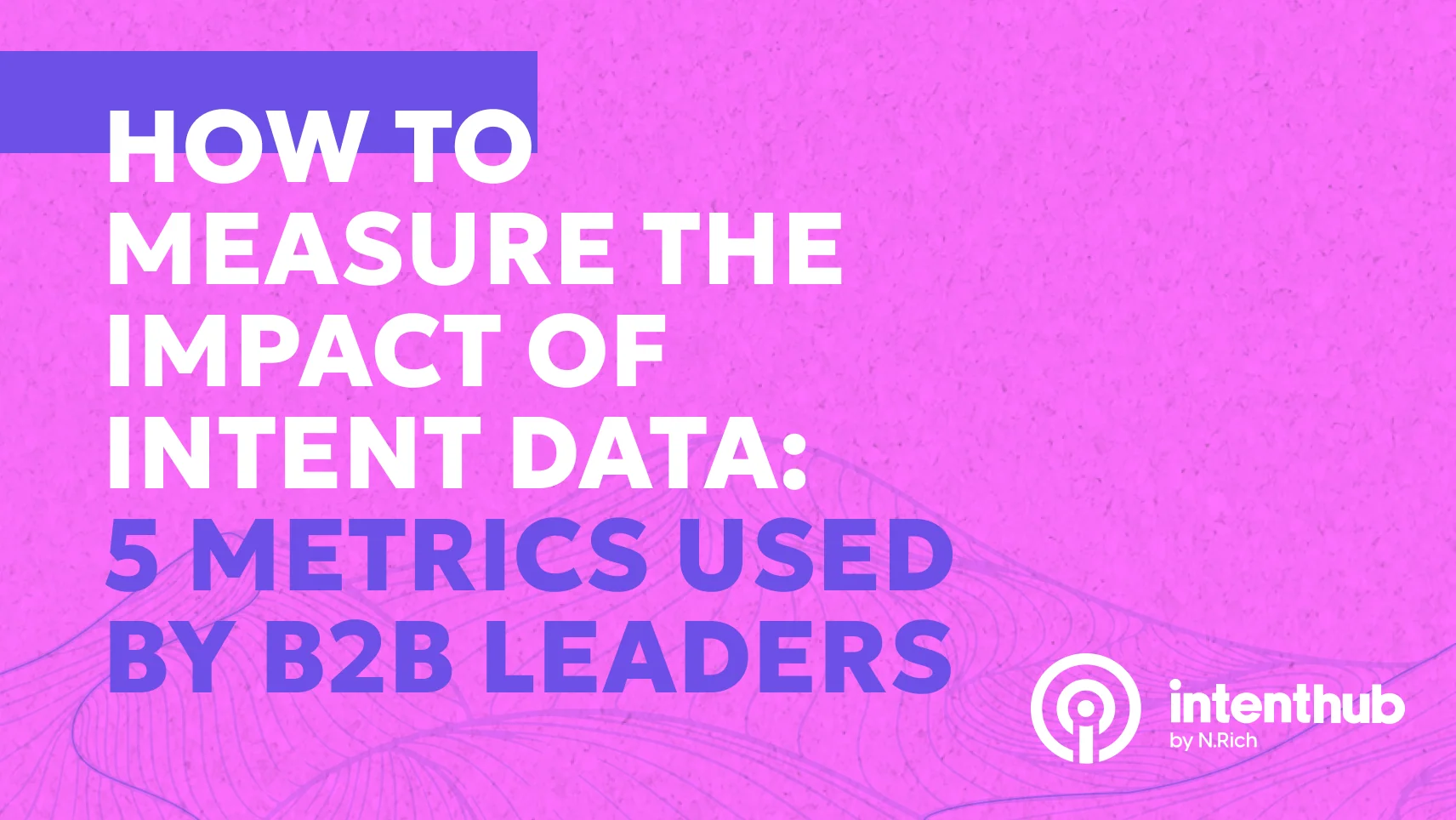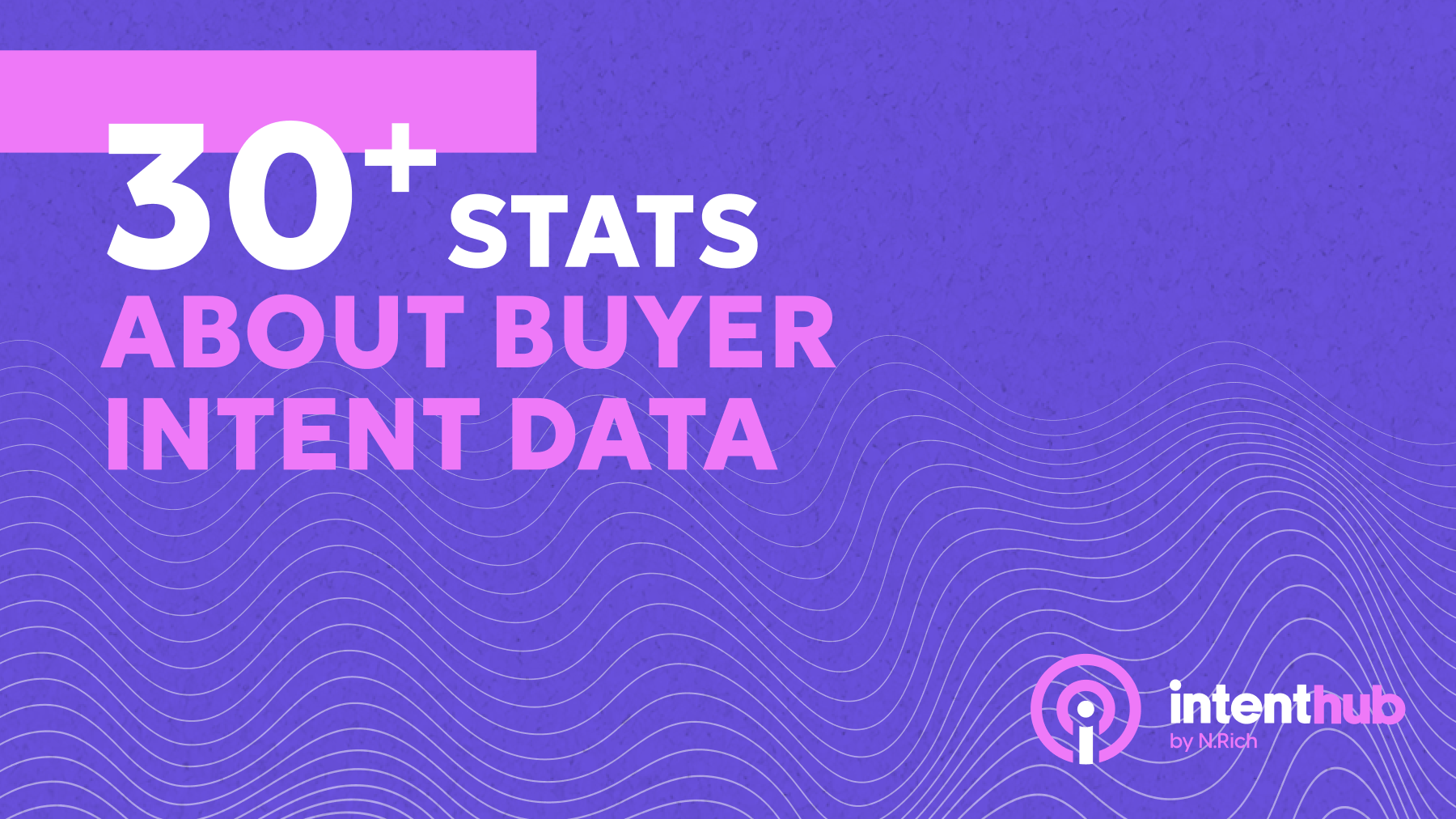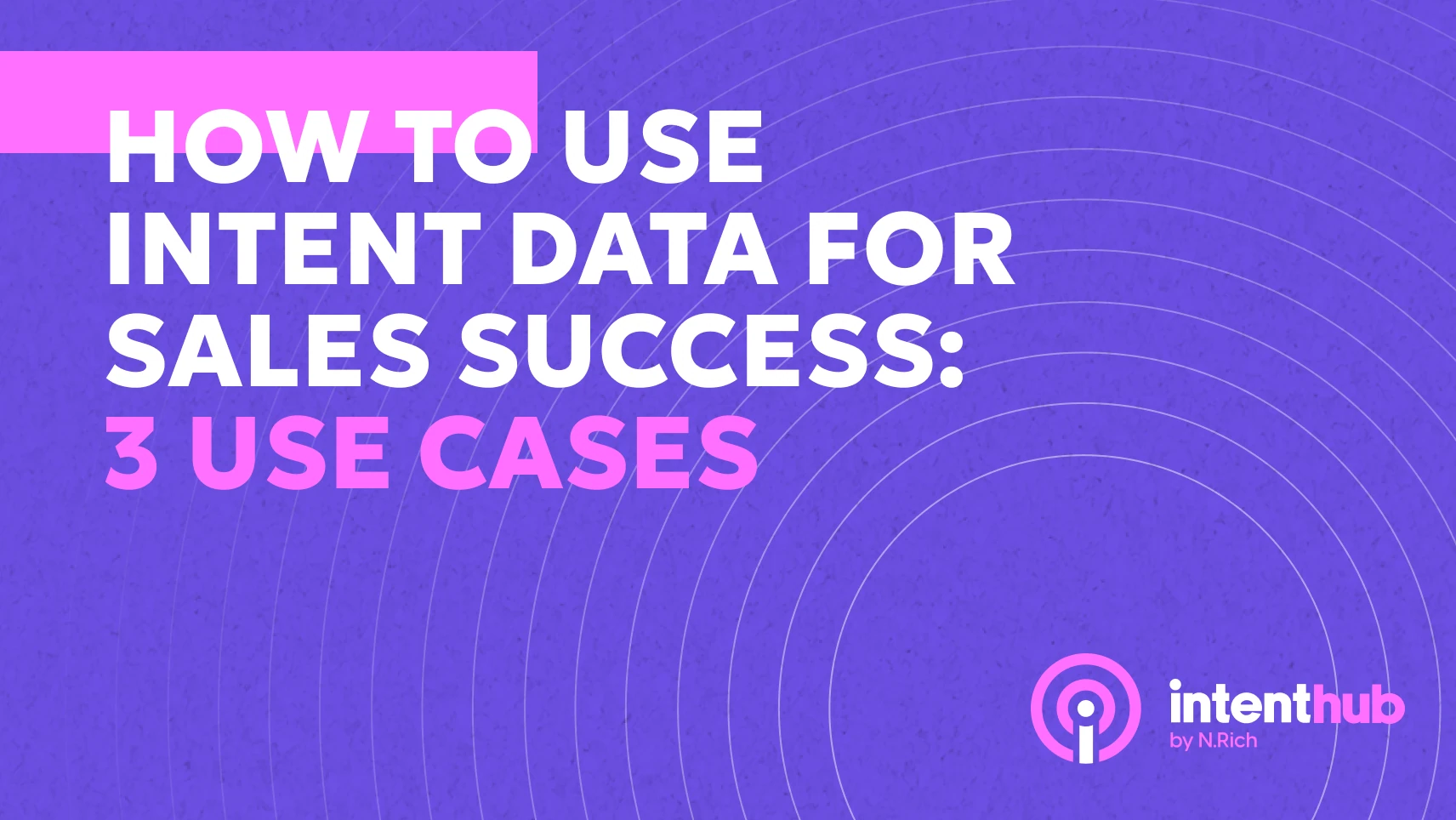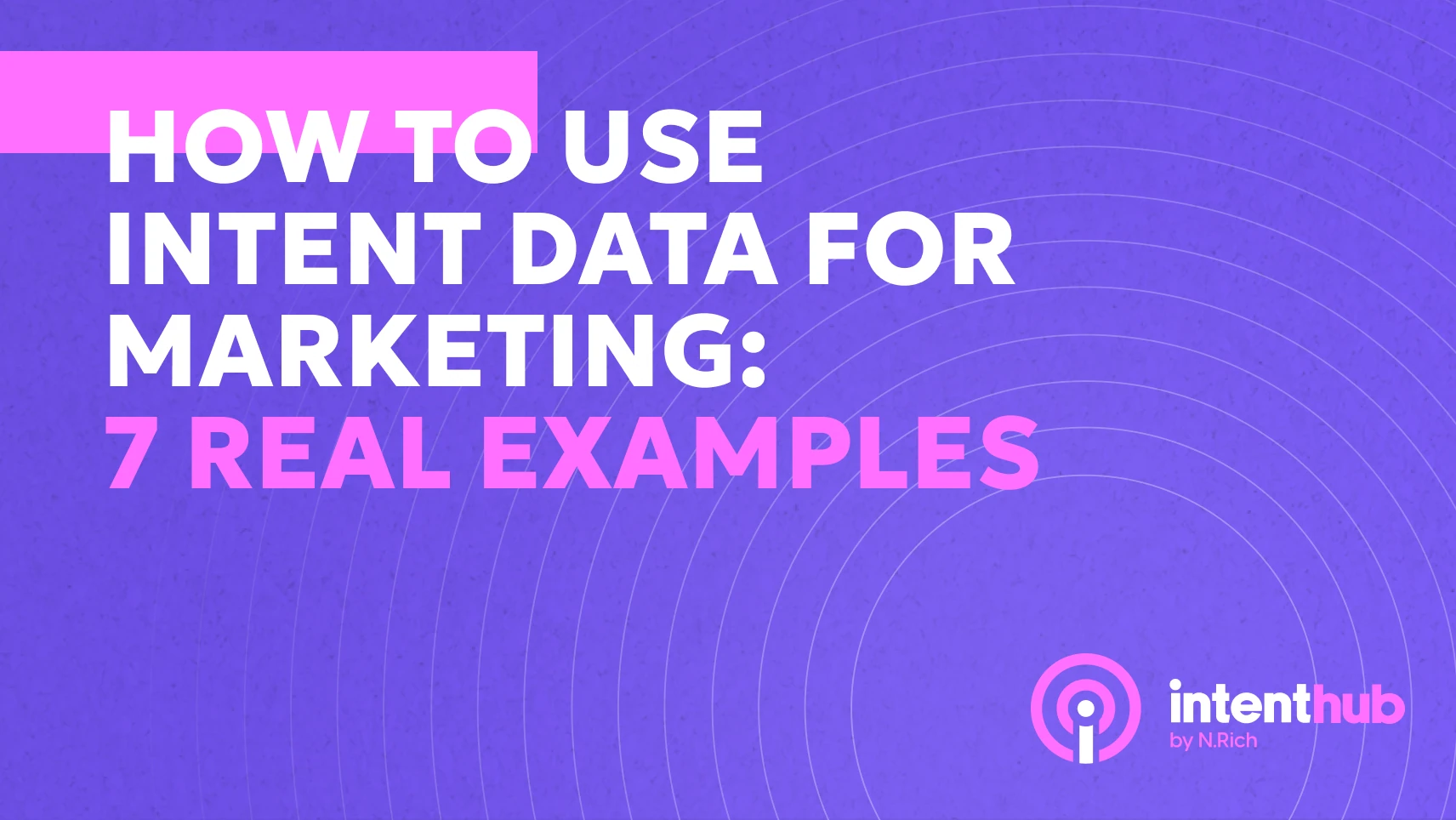
Ever wondered why a majority of marketers and sales teams harbor discontent toward intent data?
The answer lies in their approach: a hasty move to jump on the bandwagon because "others are purchasing intent data tools, so we should too."
Buying out of FOMO is rarely a wise choice, and intent data tools are not an exception to this rule.
Rather than casting a wide net with expectations of capturing a list of companies visiting your website just so you can push them over to sales, it is critical to clearly define your metrics for success.
In a quest to make sense of it all, we spoke to B2B marketing and sales leaders about their experiences and methodologies in quantifying the business impact of intent data.
Here, we share with you 5 metrics you can rely on to understand whether your investment in a buyer intent data solution truly pays off.
Metric 1. Advertising engagement
Advertising engagement evaluates the interaction between consumers and your marketing content. It is usually quantified through:
- Click-through rates
- Likes
- Shares
- Comments
- and other forms of active responses to your ads.
With intent data, it becomes easier to create content that resonates with your target audience, leading to higher engagement.
By tracking changes in engagement levels, you can effectively measure the influence of intent data on your advertising campaigns.
Gabriel Barboza, Marketing Director at Incognia, shared how they quantify the impact of intent data on advertising engagement:
“We'll compare the CTR of the same ads with the intent data audiences and not high intent data audiences. We also will track if any opportunity arises coming from the sales outreach.”
Gabriel Barboza, Marketing Director at Incognia
Metric 2. Pipeline Influence
Pipeline influence provides crucial insights into the role of intent data in driving potential customers towards conversion.
It requires specific Account-Based Marketing (ABM) tools to track the influence at the account level, enabling you to see which leads are being nudged further down the pipeline.
More importantly, it helps you create tailored content and approaches for different stages of the sales pipeline, directly influencing the pipeline's progress and success.
Elsa Giraudineau, Director of Demand Generation at Telnyx, emphasized the multifaceted usage of intent data:
“We’re using intent data for various purposes:
- Account targeting through display ads
- Website personalization based on industry, intent scoring etc.
- Target account list building based on Fit & Intent scoring (sales)
- Prioritisation of outreach based on Intent scoring (sales)
When it comes to measurement, it's not a hard science for us. Our platform provides "Influenced pipeline results" based on engagement of the accounts with our ad campaigns.”
Elsa Giraudineau, Director of Demand Generation at Telnyx
Metric 3. Quantity and quality of leads
Leads generated is a direct metric that refers to the number of potential customers you've acquired through your marketing activities.
The quality of your intent data has a significant effect on this number.
With relevant and accurate intent data, your lead generation efforts become more targeted and efficient.
James Wilkinson, co-founder and CEO of Balance One Supplements, explains how intent data influences this:
“When it comes to lead generation, intent data allows us to identify potential customers who are actively researching our products and are more likely to engage with our sales and marketing efforts. By tracking the number of leads generated from intent data compared to other sources, we are able to determine the impact of intent data on lead generation.”
James Wilkinson, co-founder and CEO of Balance One Supplements
Metric 4. Micro- and macro-conversion rate
Micro-conversions are small steps a user takes that indicate progress towards the main conversion goal, such as:
- Subscribing to a newsletter
- Downloading a whitepaper
- Sharing your blog posts
- Viewing your webinar
- Communicating with chatbots
- Signing up for a free trial
Macro-conversions, on the other hand, are primary goals like:
- Product purchases
- Contract sign-ups
- Subscription registrations
Monitoring both micro and macro-conversion rates gives a more granular view of the customer journey. It can help you understand where intent data is making a difference and where you might need to make adjustments.
Effective use of intent data often leads to higher conversion rates at both levels, indicating a successful marketing strategy.
Riva Jeane May E. Caburog, PR/Media Coordinator at Nadrich & Cohen, shared their approach:
“Our marketing team is focused on using intent data to increase our micro-conversion score from 7.5% to at least 10%, specifically the form-fill conversion where we track the number of website visitors who complete our online form from our website's homepage or landing page. Though it does not represent our actual or final conversion rate, form-fill conversion can be a strong indicator of the effectiveness of our marketing funnel.”
Riva Jeane May E. Caburog, PR/Media Coordinator at Nadrich & Cohen
Allan Stolc, Founder and CEO of Bankly, and James Wilkinson from Balance One Supplements also stressed on the importance of actual sales conversion rate:
“Our ultimate measurement for the effectiveness of intent data is the actual sales conversion rate. Our marketing team uses intent data to identify high-quality leads, which will then be used by sales to pitch our services to the prospects and close the deal.”
Allan Stolc, Founder and CEO of Bankly
“We quantify the impact of our use of intent data by tracking conversion rates. Moreover, with intent data, we are able to target our marketing efforts more effectively, resulting in higher conversion rates. By comparing the conversion rates of intent data leads to those generated from other sources, it’s easy for us to measure and quantify the impact of intent data on our conversion rates.”
James Wilkinson, co-founder and CEO of Balance One Supplements
And Will Yang, Head of Growth & Customer Success at Instrumentl mentioned:
“We use intent data for lead scoring and predictive analytics, which helps us identify potential prospects and determine their likelihood of converting into customers.”
Will Yang, Head of Growth & Customer Success at Instrumentl
Metric 5. CAC
Customer Acquisition Cost (CAC) is a critical financial metric for any business.
It represents the total cost of acquiring a new customer, including all marketing and sales expenses.
The lower the CAC, the more cost-effective your marketing strategies are.
Intent data can drastically reduce your CAC by ensuring you're targeting the right audience. If you're reaching out to prospects with high purchase intent, you're likely to convert them more quickly and with fewer resources.
Sam Tabak, co-founder of Rabbi Meir Baal Haness Charities, explains:
“We use the Customer Acquisition Cost (CAC) metric to better understand if using intent data makes a significant difference in lowering the total cost to acquire new customers. Lower costs mean that using intent data is efficient because we are getting high-quality leads with less marketing and advertising expenses.”
Sam Tabak, co-founder of Rabbi Meir Baal Haness Charities
Out-of-the-box opinion: You can’t fully quantify the impact
While these metrics offer important insights, they cannot entirely quantify the impact of intent data.
The reason is simple: intent data affects various aspects of your marketing and sales strategies in ways that may not be immediately measurable.
For example, intent data can improve overall team efficiency, lead to better customer relationship management, and provide insights for product development - benefits that may not translate directly into numbers but are nevertheless essential for long-term success.
Matthew Ramirez, a serial entrepreneur and investor at Rephrasely, believes:
“The business impact of intent data is immeasurable. This data reveals how customers think and feel about your brand, products, or services. It can help you identify the pain points and areas of improvement. It will also help you reach your customers at the right time with the right content. The main concern with intent data is to use it wisely and in the most effective way.”
Matthew Ramirez, a serial entrepreneur and investor at Rephrasely
These metrics, alongside continuous testing and analysis, can significantly aid in optimizing the use of intent data and measuring its impact on your business.
Remember, the effective use of intent data is a strategic process, one that requires a clear understanding of your business goals and a commitment to constantly refining your approach based on the data-driven insights you gain.
Topics





